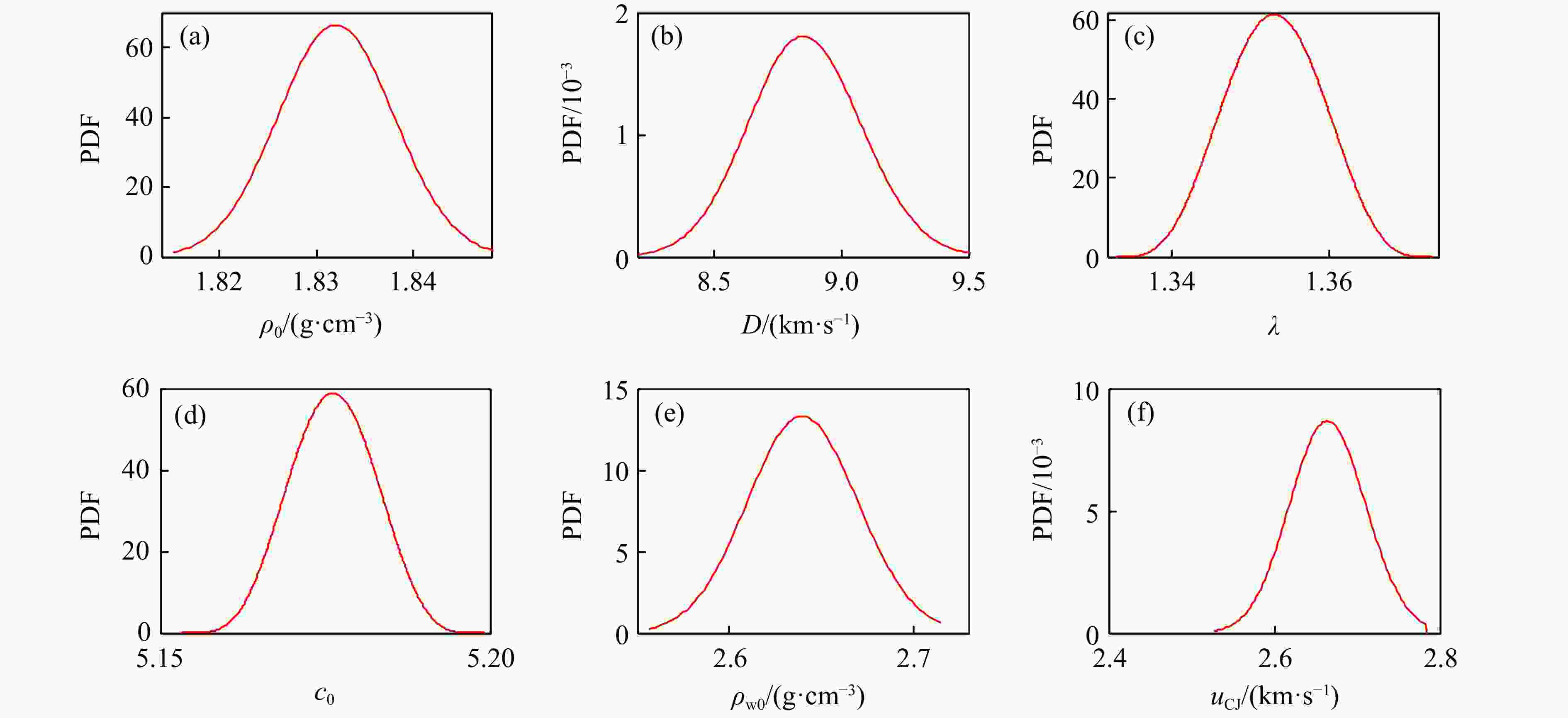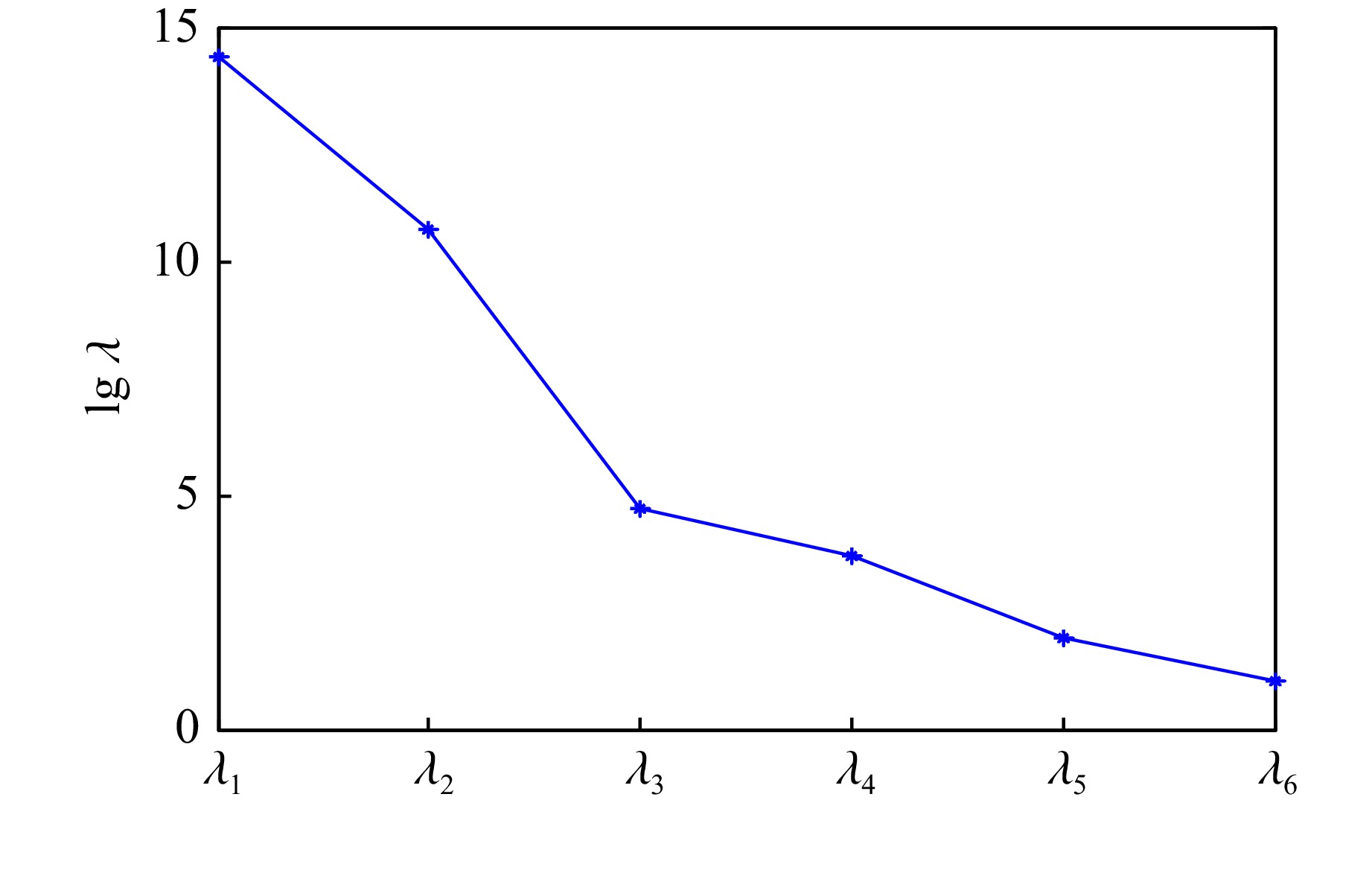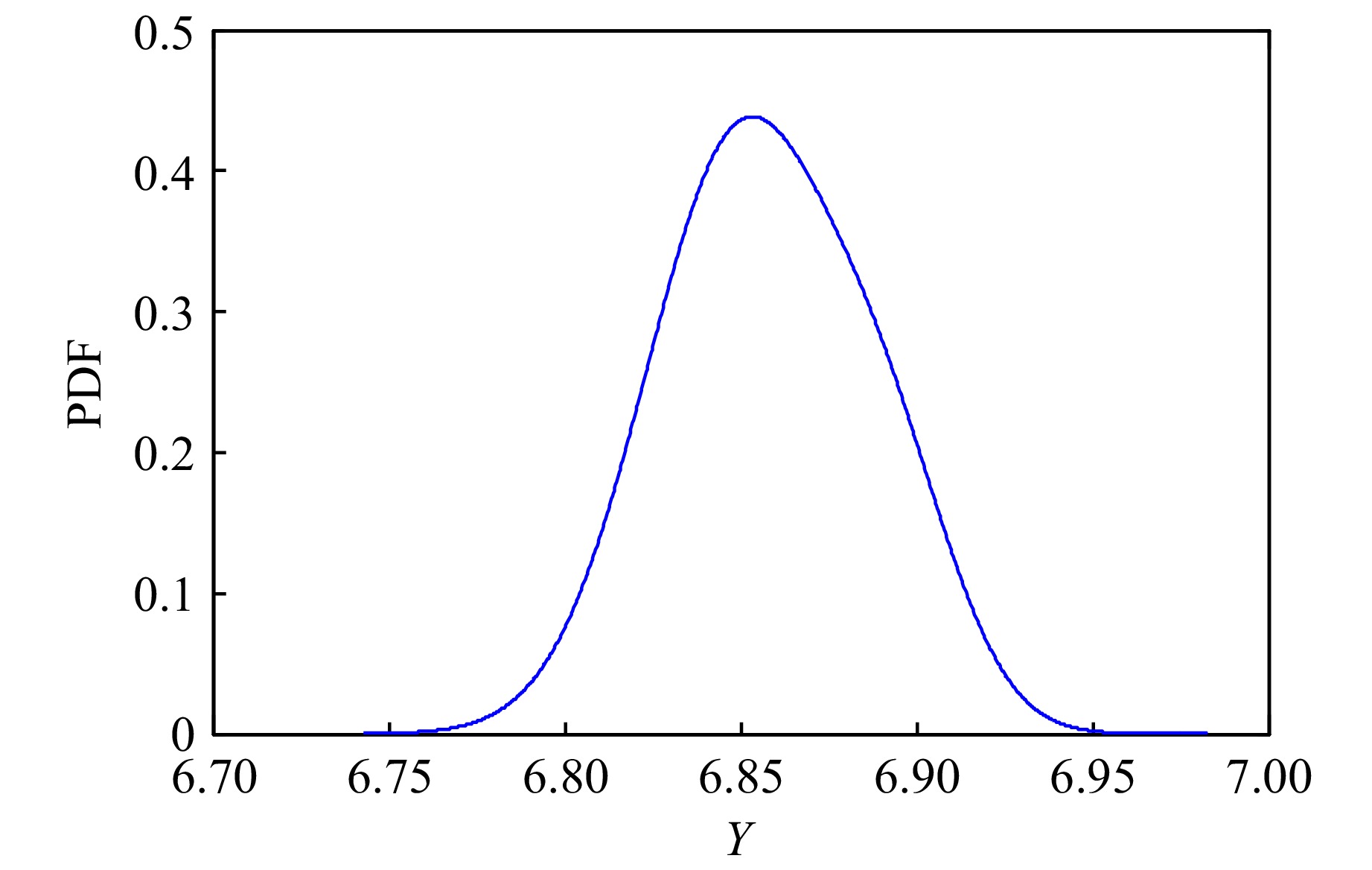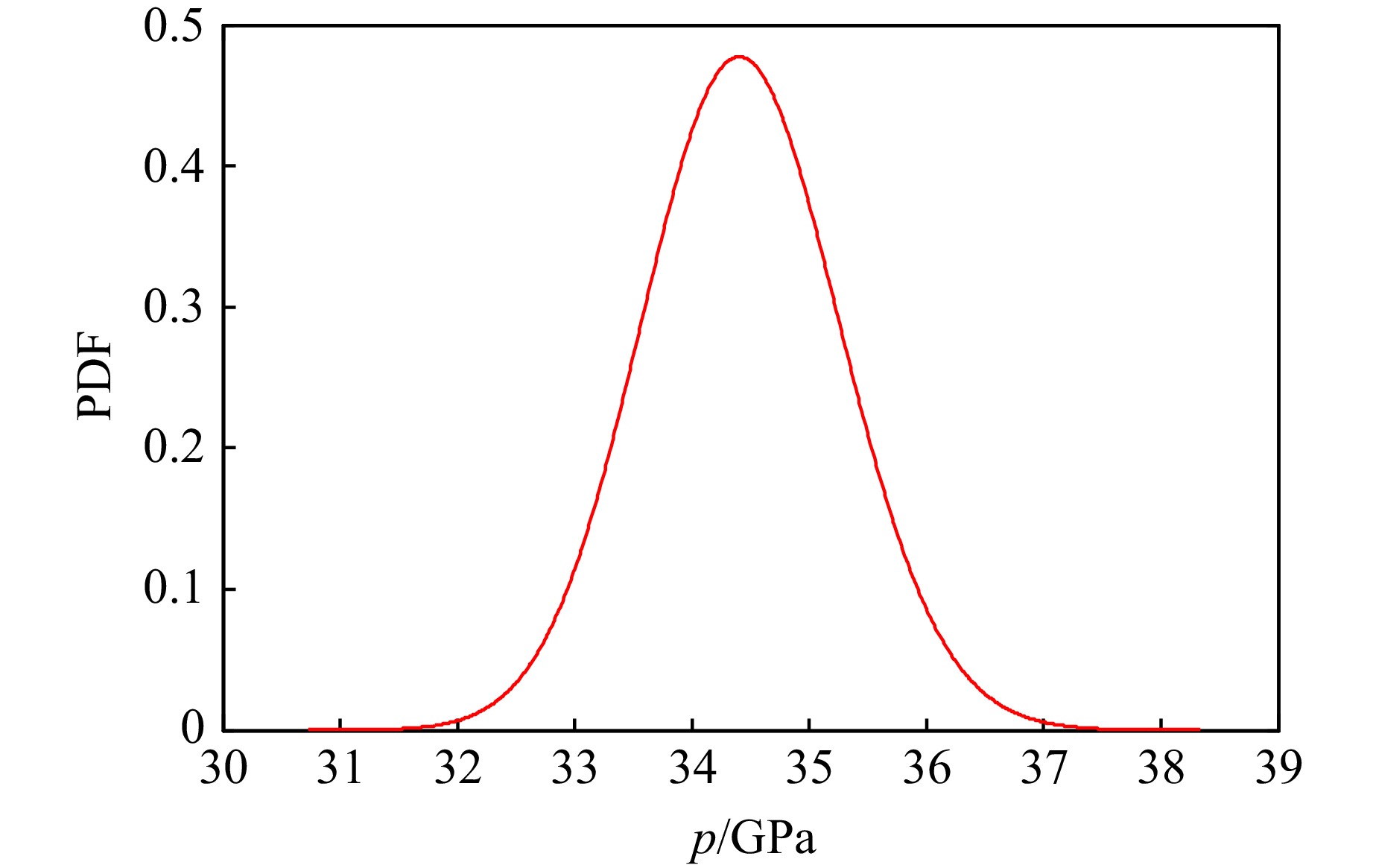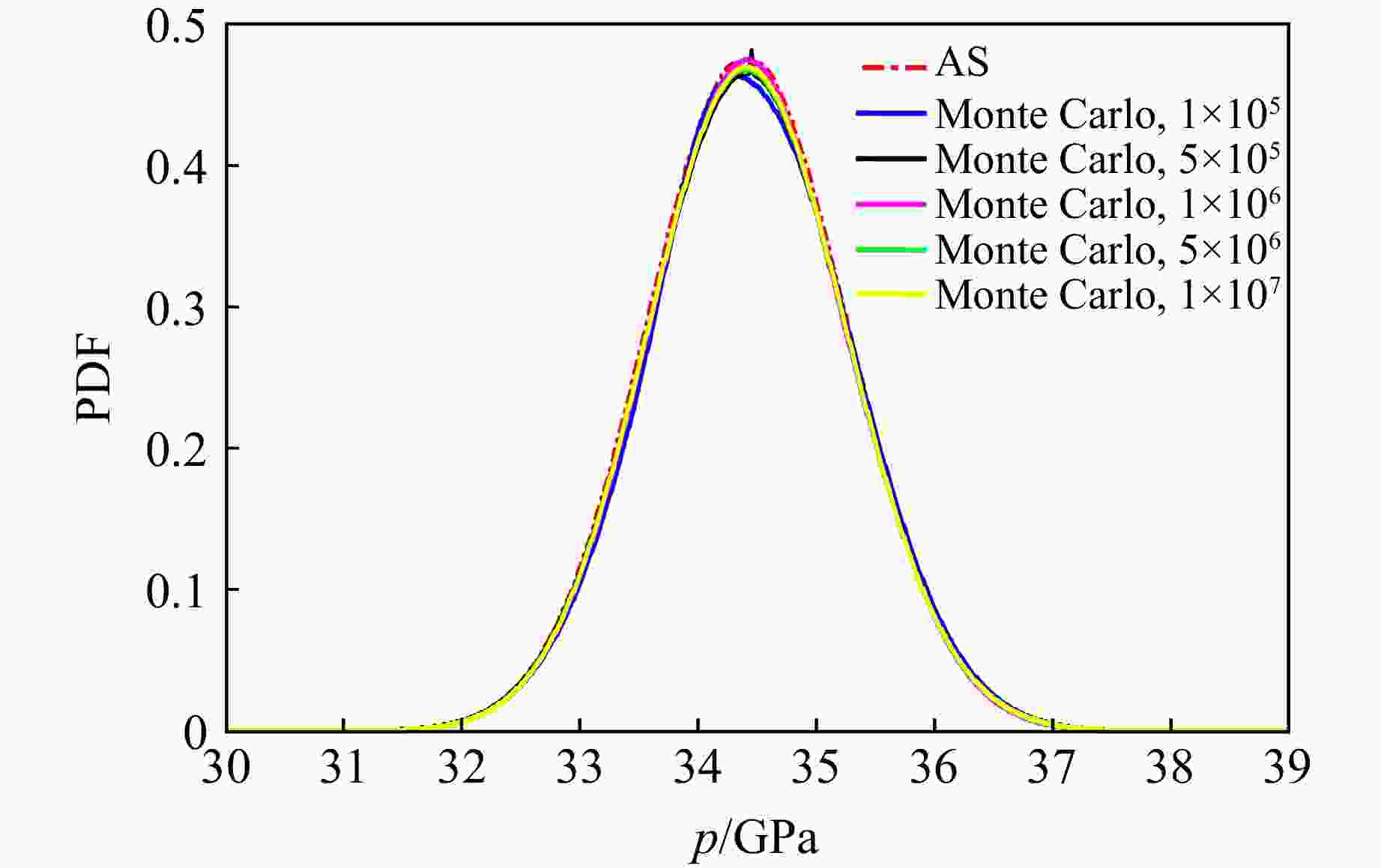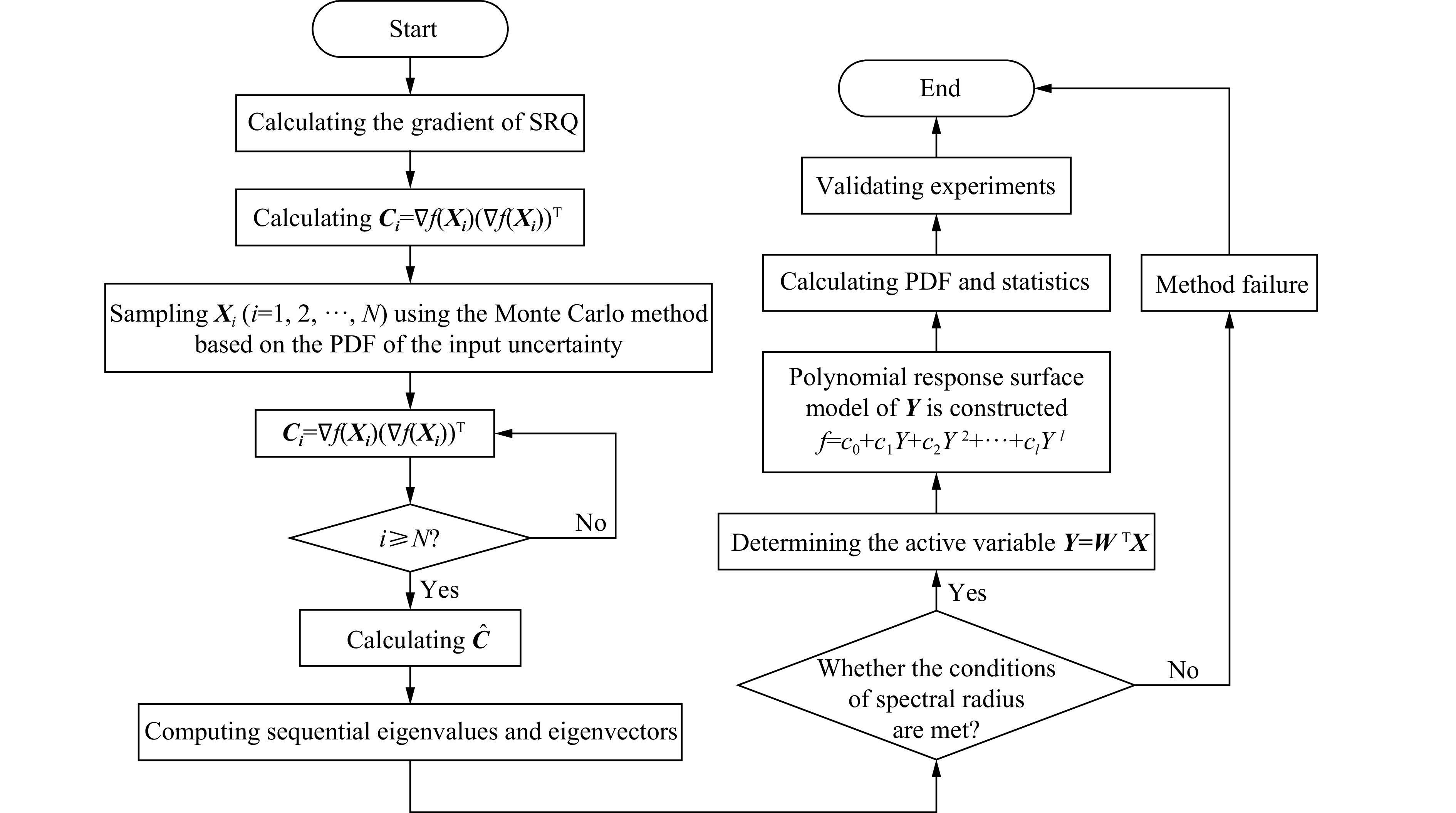Uncertainty Propagation Analysis of Detonation Pressure Based on Active Subspace
-
摘要: 爆压间接标定中的不确定度无法消除,不确定度量化能提高模型的可信度和预测能力。然而,爆压间接标定函数具有复杂非线性结构耦合多输入变量等特征,使得爆压不确定度传播研究遇到“维数灾难”等问题。活跃子空间是处理爆压不确定度量化的有效工具。首先,导出系统响应量(system response quantity, SRQ)的梯度协方差矩阵;然后,基于Monte Carlo方法,寻找活跃变量,即SRQ变化最快的方向;接着,将高维输入不确定度转化成一维空间处理,避免了“维数灾难”;最后,建立基于一维活跃变量的四阶多项式响应面模型。结果表明,活跃子空间方法成功刻画了输入不确定度对SRQ的影响,且试验结果落在代理模型预测值的置信区间内,确认了爆压模型的预测能力。研究还发现,爆压的离散程度较大,与孙承纬的结论吻合。此外,建立了一种新的爆压模型。该模型是仿射变换与多项式函数的复合运算,具有形式简洁、光滑性好、鲁棒能力强、运算速度快的特点,且系统输入量是随机变量而非固定值,多项式拟合系数不因输入不确定度的变化而改变。该研究方法具备体系性,可以推广到其他类型的炸药爆压预测。Abstract: Uncertainty cannot be eliminated in the indirect calibration of the detonation pressure, and the predictability and credibility of the model can be enhanced through uncertainty quantification of the detonation pressure. However, the indirect calibration function of the detonation pressure exhibits complex nonlinearity coupled with multiple inputs, making the study of uncertainty propagation of detonation pressure prone to issues such as the “curse of dimensionality”. Active subspace is proven to be an effective tool for handling uncertainty quantification of the detonation pressure model. The specific steps are as follows: to begin with, the covariance matrix is derived based on gradient of the system response quantity (SRQ). Then an active variable is deduced through the Monte Carlo method, which is the direction whose perturbations produce the greatest change in SRQ. A single derived active subspace is used as the input uncertainty instead of the six parameters. The “curse of dimensionality” can be relieved in this case. Finally, a fourth-order polynomial response surface model is established based on a one-dimensional active variable. The results show that the effects of input uncertainty on SRQ are successfully characterized using the means of the active subspace technique. The test data fall within the confidence interval of the predicted values from the surrogate model, and the predictive capability of the detonation pressure model is validated. The study also reveals that there is a significant degree of dispersion in detonation pressure, which is consistent with the viewpoint of Prof. Chengwei Sun. Furthermore, a new detonation pressure model is constructed in this paper. This model is a composite operation between an affine transformation and a polynomial function. It retains the characteristic of a concise form, sufficient smoothness, strong robustness, and fast computation. The input of the model is a random variable rather than a fixed value, and the polynomial coefficients remain unchangeable when it confronts the variability of input uncertainty. The research is an extension and development of previous scholars. Moreover, the research methodology is systematic, which can be applied to detonation pressure prediction for other types of explosives.
-
Key words:
- active subspace /
- uncertainty quantification /
- detonation pressure /
- surface model /
- dimension reduction
-
表 1 爆压的试验和统计结果
Table 1. Test and statistical results of the detonation pressure
GPa Statistical results Test data[2] Mean Standard deviation Upper confidence limit Lower confidence limit 34.67 1.51 36.01 32.75 34.41 -
[1] 孙承纬, 卫玉章, 周之奎. 应用爆轰物理 [M]. 北京: 国防工业出版社, 2000: 216–239.SUN C W, WEI Y Z, ZHOU Z K. Applied detonation physics [M]. Beijing: National Defense Industry Press, 2000: 216–239. [2] MADER C L. Numerical modeling of explosives and propellants [M]. 3rd ed. Boca Raton: CRC Press, 2008. [3] LIANG X, WANG R, GHANEM R. Uncertainty quantification of detonation through adapted polynomial chaos [J]. International Journal for Uncertainty Quantification, 2020, 10(1): 83–100. doi: 10.1615/Int.J.UncertaintyQuantification.2020030630 [4] LIANG X, WANG R L. Verification and validation of detonation modeling [J]. Defence Technology, 2019, 15(3): 398–408. doi: 10.1016/j.dt.2018.11.005 [5] 梁霄, 王瑞利, 胡星志, 等. 基于多项式混沌方法对C-J爆轰参数不确定度的分析 [J]. 爆炸与冲击, 2023, 43(10): 104202. doi: 10.11883/bzycj-2023-0030LIANG X, WANG R L, HU X Z, et al. Uncertainty analysis of C-J detonation parameters based on polynomial chaos theory [J]. Explosion and Shock Waves, 2023, 43(10): 104202. doi: 10.11883/bzycj-2023-0030 [6] 舒俊翔, 裴红波, 黄文斌, 等. 几种常用炸药的爆压与爆轰反应区精密测量 [J]. 爆炸与冲击, 2022, 42(5): 052301. doi: 10.11883/bzycj-2021-0305SHU J X, PEI H B, HUANG W B, et al. Accurate measurements of detonation pressure and detonation reaction zones of several commonly-used explosives [J]. Explosion and Shock Waves, 2022, 42(5): 052301. doi: 10.11883/bzycj-2021-0305 [7] 赵万广, 周显明, 李加波, 等. LiF单晶的高压折射率及窗口速度的修正 [J]. 高压物理学报, 2014, 28(5): 571–576. doi: 10.11858/gywlxb.2014.05.010ZHAO W G, ZHOU X M, LI J B, et al. Refractive index of LiF single crystal at high pressure and its window correction [J]. Chinese Journal of High Pressure Physics, 2014, 28(5): 571–576. doi: 10.11858/gywlxb.2014.05.010 [8] 戴诚达, 王翔, 谭华. Hugoniot实验的粒子速度测量不确定度分析 [J]. 高压物理学报, 2005, 19(2): 113–119. doi: 10.11858/gywlxb.2005.02.003DAI C D, WANG X, TAN H. Evaluation for uncertainty of particle velocity in Hugoniot measurements [J]. Chinese Journal of High Pressure Physics, 2005, 19(2): 113–119. doi: 10.11858/gywlxb.2005.02.003 [9] 梁霄, 王瑞利. 基于冲击Hugoniot关系的爆压性质和不确定度量化 [J]. 兵工学报, 2024, 45(5): 1673–1680. doi: 10.12382/bgxb.2022.1207LIANG X, WANG R L. Property and uncertainty quantification of detonation pressure based on shock Hugoniot relationship [J]. Acta Armamentarii, 2024, 45(5): 1673–1680. doi: 10.12382/bgxb.2022.1207 [10] WILKINS M L. Computer simulation of dynamic phenomena [M]. Berlin: Springer, 1999. [11] BENNER P, MEHRMANN V, SORENSEN D C. Dimension reduction of large-scale systems [M]. Berlin: Springer, 2005. [12] HUGHES K T, CHARONKO J J, PRESTRIDGE K P, et al. Proton radiography of explosively dispersed metal particles with varying volume fraction and varying carrier phase [J]. Shock Waves, 2021, 31(1): 75–88. doi: 10.1007/s00193-020-00983-8 [13] CONSTANTINE P G, DOW E, WANG Q Q. Active subspace methods in theory and practice: applications to kriging surfaces [J]. SIAM Journal on Scientific Computing, 2014, 36(4): A1500–A1524. doi: 10.1137/130916138 [14] CONSTANTINE P G. Active subspaces: emerging ideas for dimension reduction in parameter studies [M]. Philadelphia: Society for Industrial and Applied Mathematics, 2015: 21–88. [15] CONSTANTINE P G, EMORY M, LARSSON J, et al. Exploiting active subspaces to quantify uncertainty in the numerical simulation of the HyShot Ⅱ scramjet [J]. Journal of Computational Physics, 2015, 302: 1–20. doi: 10.1016/j.jcp.2015.09.001 [16] WEI J L, AN J, ZHANG Q, et al. Exploiting active subspaces for geometric optimization of cavity-stabilized supersonic flames [J]. AIAA Journal, 2023, 61(8): 3353–3364. doi: 10.2514/1.J062748 [17] CORTESI A F, CONSTANTINE P G, MAGIN T E, et al. Forward and backward uncertainty quantification with active subspaces: application to hypersonic flows around a cylinder [J]. Journal of Computational Physics, 2020, 407: 109079. doi: 10.1016/j.jcp.2019.109079 [18] KIM J, WANG Z Q, SONG J. Adaptive active subspace-based metamodeling for high-dimensional reliability analysis [J]. Structural Safety, 2024, 106: 102404. doi: 10.1016/j.strusafe.2023.102404 [19] GREY Z J, CONSTANTINE P G. Active subspaces of airfoil shape parameterizations [J]. AIAA Journal, 2018, 56(5): 2003–2017. doi: 10.2514/1.J056054 [20] HU X Z, CHEN X Q, LATTARULO V, et al. Multidisciplinary optimization under high-dimensional uncertainty for small satellite system design [J]. AIAA Journal, 2016, 54(5): 1732–1741. doi: 10.2514/1.J054627 [21] 胡星志. 活跃子空间降维不确定性设计优化方法及其航天应用 [M]. 北京: 中国宇航出版社, 2023.HU X Z. Uncertainty-based design optimization approach and aerospace application with active subspace dimension reduction [M]. Beijing: China Astronautic Publishing House, 2023. [22] 王娜娜, 解青, 苏星宇, 等. 湍流燃烧机理和调控的活性子空间分析方法 [J]. 航空学报, 2021, 42(12): 625228. doi: 10.7527/S1000-6893.2021.25228WANG N N, XIE Q, SU X Y, et al. Active subspace methods for analysis and optimization of turbulent combustion [J]. Acta Aeronautica et Astronautica Sinica, 2021, 42(12): 625228. doi: 10.7527/S1000-6893.2021.25228 -






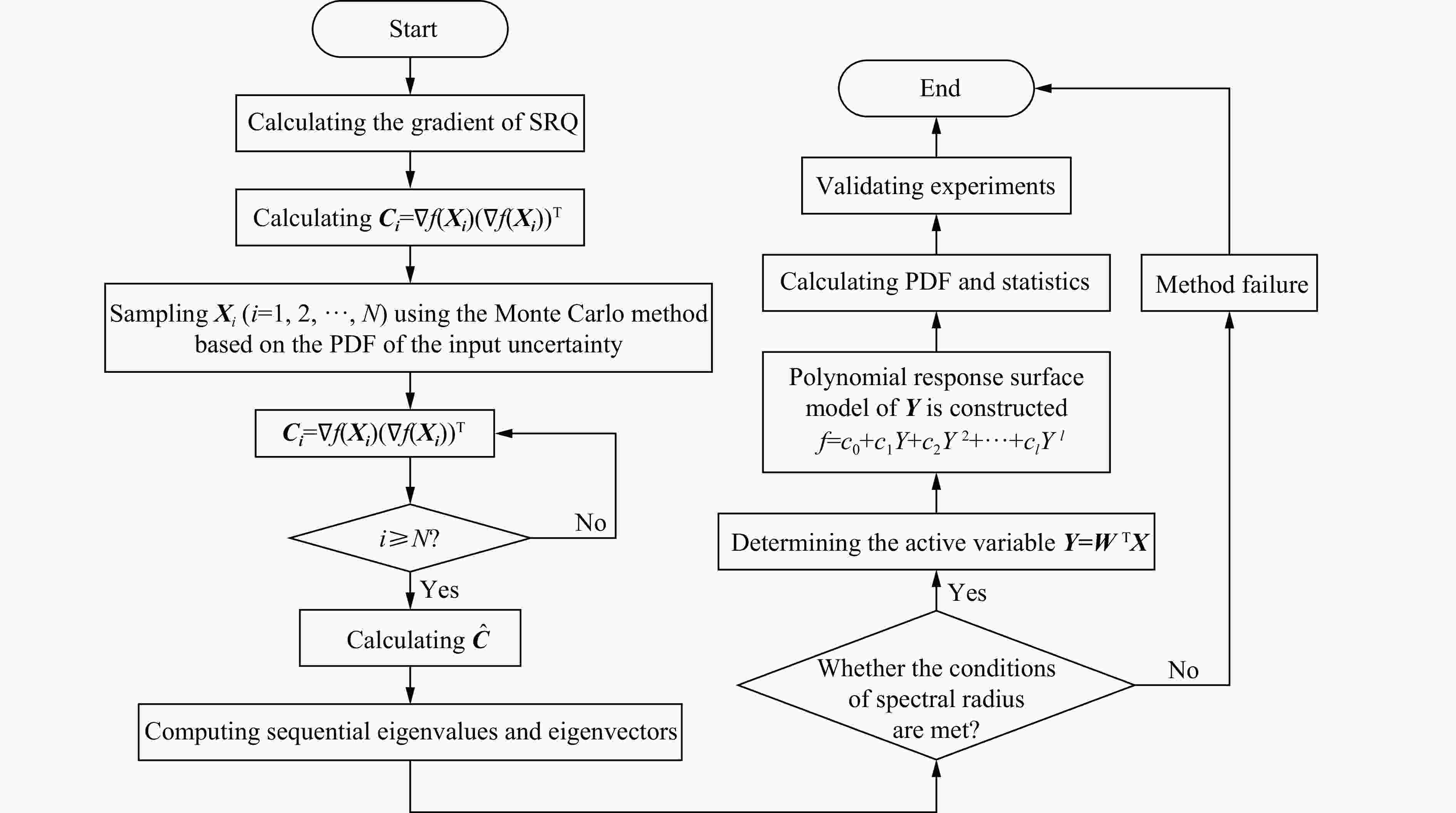
 下载:
下载:
